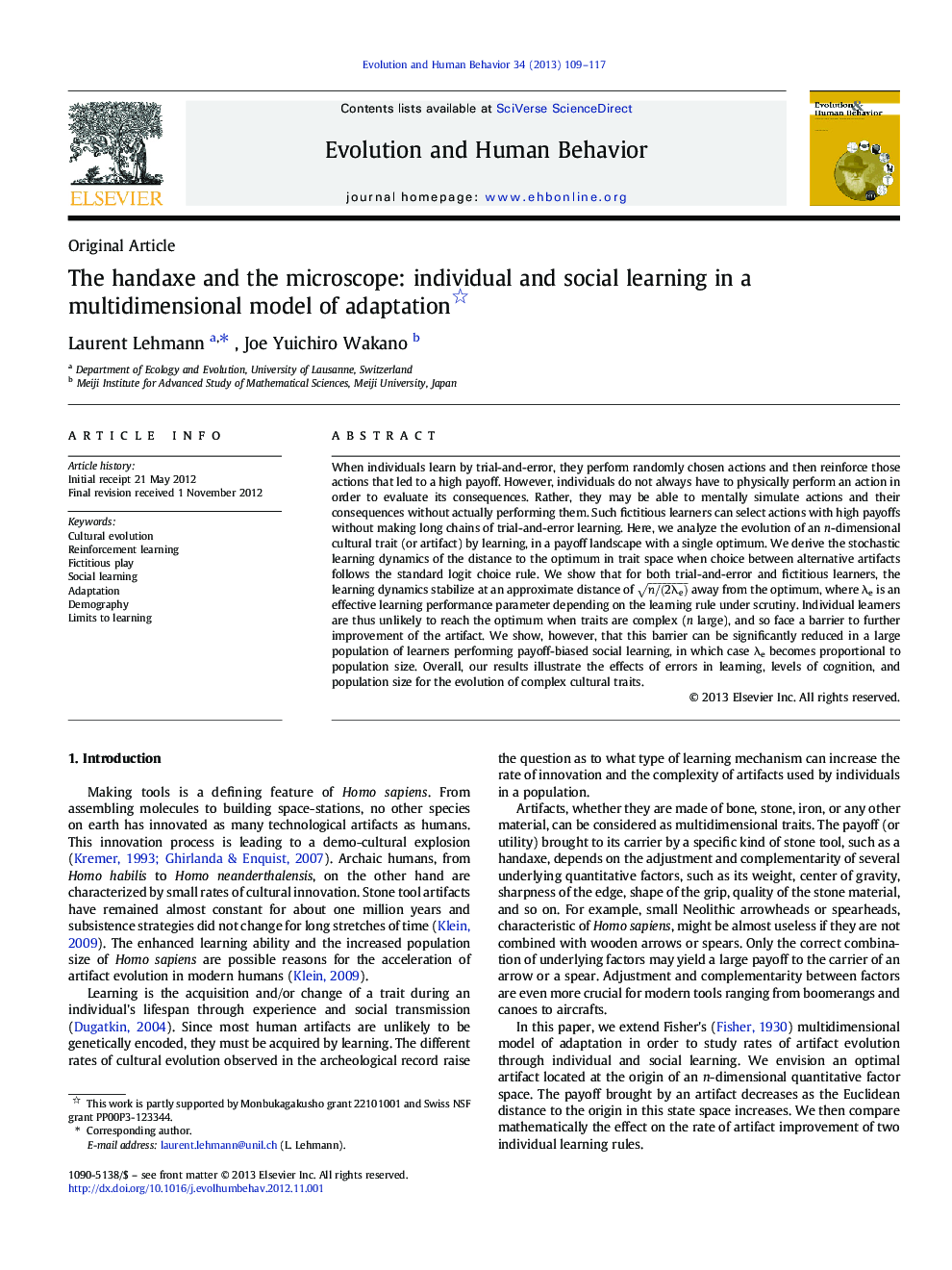| Article ID | Journal | Published Year | Pages | File Type |
|---|---|---|---|---|
| 943247 | Evolution and Human Behavior | 2013 | 9 Pages |
When individuals learn by trial-and-error, they perform randomly chosen actions and then reinforce those actions that led to a high payoff. However, individuals do not always have to physically perform an action in order to evaluate its consequences. Rather, they may be able to mentally simulate actions and their consequences without actually performing them. Such fictitious learners can select actions with high payoffs without making long chains of trial-and-error learning. Here, we analyze the evolution of an n -dimensional cultural trait (or artifact) by learning, in a payoff landscape with a single optimum. We derive the stochastic learning dynamics of the distance to the optimum in trait space when choice between alternative artifacts follows the standard logit choice rule. We show that for both trial-and-error and fictitious learners, the learning dynamics stabilize at an approximate distance of n/2λe away from the optimum, where λe is an effective learning performance parameter depending on the learning rule under scrutiny. Individual learners are thus unlikely to reach the optimum when traits are complex (n large), and so face a barrier to further improvement of the artifact. We show, however, that this barrier can be significantly reduced in a large population of learners performing payoff-biased social learning, in which case λe becomes proportional to population size. Overall, our results illustrate the effects of errors in learning, levels of cognition, and population size for the evolution of complex cultural traits.
